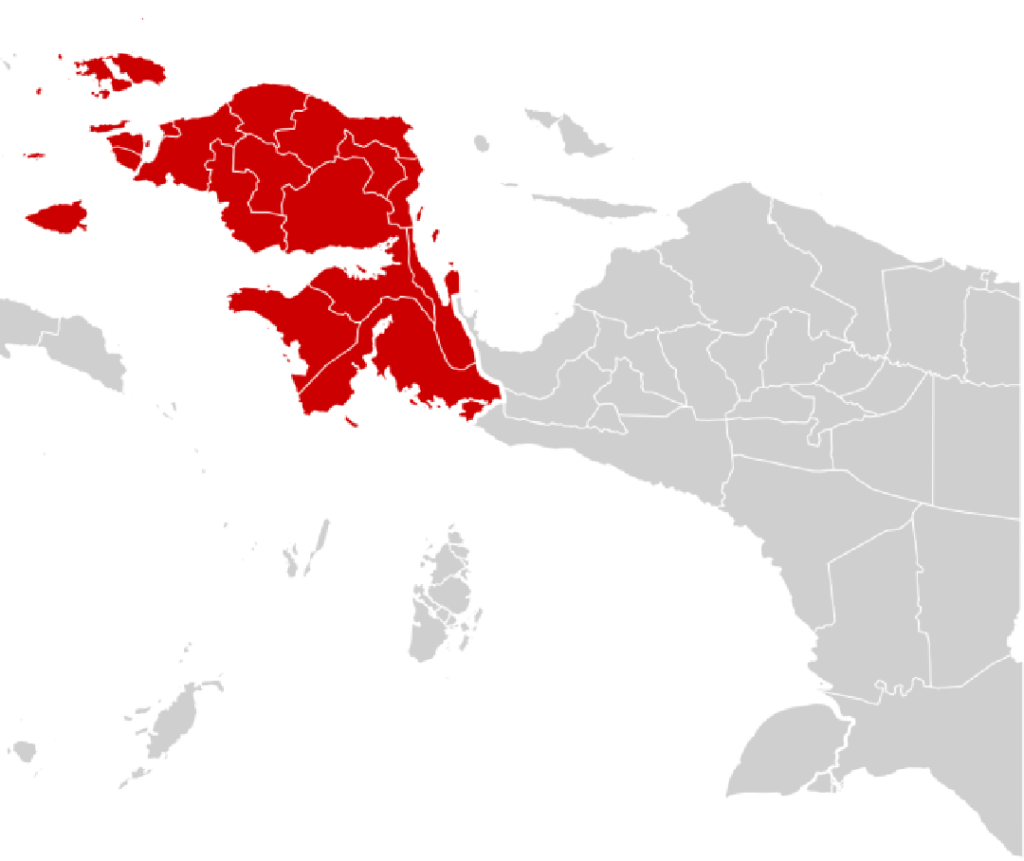In the heart of Papua’s lush rainforests, where mist wraps around ancient trees and the calls of birds echo like forgotten songs, lies a natural apothecary that has healed generations. Far from bustling cities and modern laboratories, the people of Papua have long depended on the wisdom of the forest—a library written in leaves, roots, and fruits. Among these green remedies, some stand as silent sentinels of health and tradition: Boroco, Empatung, Matoa, Kayu Akway, Daun Sampare, Sarang Semut, and Buah Merah.
These plants are more than just flora—they are the living story of a culture deeply connected to nature’s rhythms, a story that blends healing, spirituality, and survival.
- Boroco: The Soothing Balm of the Forest
Imagine walking through the rainforest near Fakfak, where the scent of fresh earth mingles with an unusual, sweet resin drifting through the air. This is Boroco—a small tree whose bark holds a sticky sap that local healers treasure. When a cut or wound appears, a dab of Boroco’s resin, warm and fragrant, is gently applied. Its natural antiseptic qualities help prevent infection and calm inflammation.
At twilight, Boroco’s leaves are steamed in pots to create healing vapors. The steam rises into the air, carrying relief for aching joints and tired lungs. For the Papuan people, Boroco is a gift—offering comfort not just for the body, but for the spirit too.
- Empatung: The Fever’s Foe
High in the shadowy hills near mountain streams grows Empatung, a hardy shrub with leaves that shimmer with a soft minty aroma. When fever grips a household, mothers and grandmothers turn to Empatung leaves, boiling them into bitter but life-giving tea. Sips bring down high temperatures and soothe fever’s fiery grasp.
Elders tell stories of how this plant was found by accident, when a child took a sip of wild herbal water and soon recovered from a stubborn fever. Since then, Empatung has earned its place in local medicine cabinets—a quiet warrior against illness.
- Matoa: The Nut of Endurance
The Matoa tree is a giant of the lowland rainforest, its branches heavy with clusters of round nuts encased in leathery shells. These nuts are a treasure trove of nutrition—packed with proteins, fats, and minerals. During festivals and ceremonies, Matoa nuts are shared as symbols of strength and sustenance.
Hunters and travelers alike rely on Matoa to restore energy after long journeys. In Papua’s villages, Matoa is more than food—it’s medicine for the weary body, a natural source of vigor and vitality.
- Kayu Akway: Healing from Within
While many admire Papua’s forests for their towering trees, Kayu Akway offers a different kind of gift. The bark of this resilient tree is collected and boiled into medicinal teas. Known for easing digestive troubles and calming stomach ulcers, Kayu Akway’s tannins work gently to restore balance within.
The bark’s bitter taste is a small price for relief—a tradition passed down through generations who learned to listen to their bodies and the forest’s whisperings.
- Daun Sampare: The Gentle Healer
In the foothills, where sunlight dapples through leafy canopies, grows Daun Sampare—a broadleaf plant used for digestive and postpartum care. New mothers chew its fresh leaves to cleanse impurities and ease discomfort, while others turn to it for relief from stomach cramps and bloating.
This plant’s unassuming presence belies its importance, quietly supporting the cycle of life through its healing touch.
- Sarang Semut: The Ant-Nest Miracle
One of Papua’s most fascinating medicinal plants is Sarang Semut, or “ant nest.” This epiphyte forms bulbous stems that house native ants in a mutualistic embrace. The plant’s swollen chambers, dried and brewed, become a powerful tonic—believed to purify blood, boost endurance, and manage diabetes.
Scientific studies are beginning to unlock the secrets hidden within Sarang Semut’s polyphenols and flavonoids, validating what Papua’s healers have known for centuries: this strange-looking plant is a potent ally in the fight for health.
- Buah Merah: Papua’s Red Miracle
Perhaps no plant better embodies Papua’s medicinal legacy than Buah Merah—the “Red Fruit.” Growing wild across lowlands and highlands, Buah Merah captivates with its fiery color and remarkable health benefits.
For generations, the Papuan people have turned Buah Merah into nourishing dishes and potent oils. Its thick, reddish pulp is often cooked into savory sauces or pressed to release golden oil, rich in vitamins and antioxidants.
This fruit is more than food—it is a symbol of life, strength, and protection.
Science Meets Tradition
Modern research confirms what local knowledge has always known. Buah Merah’s wealth of beta-carotene, vitamin E, and essential fatty acids gives it extraordinary anti-inflammatory and antioxidant powers. It supports cardiovascular health, regulates blood sugar, and even shows promise in cancer prevention.
Scientists at Papua’s universities and beyond have documented its ability to enhance immunity, improve eye health, and strengthen bones. Feeding studies have even shown improved health markers in animals consuming Buah Merah extracts, hinting at future applications in medicine.
A Living Heritage and a Sustainable Future
Papua’s medicinal plants tell a story of resilience—a story of communities living in harmony with the forest, respecting its gifts while ensuring its future. From the resinous sap of Boroco to the deep red of Buah Merah, these plants are threads weaving together culture, ecology, and healing.
Efforts to protect and sustainably cultivate these species are growing. Farmers and researchers collaborate to preserve biodiversity while harnessing economic opportunities for local communities.
Papua’s forest pharmacy is not just a relic of the past—it’s a vibrant, living legacy offering hope and health for generations to come.
Conclusion
The forests of Papua hold countless secrets, whispered in the rustle of leaves and the fragrance of herbs. They are a testament to the timeless bond between people and the earth—a bond where every plant is a teacher, every fruit a healer.
Through Boroco, Empatung, Matoa, Kayu Akway, Daun Sampare, Sarang Semut, and Buah Merah, Papua offers the world a glimpse of nature’s boundless generosity and the enduring power of traditional knowledge.


